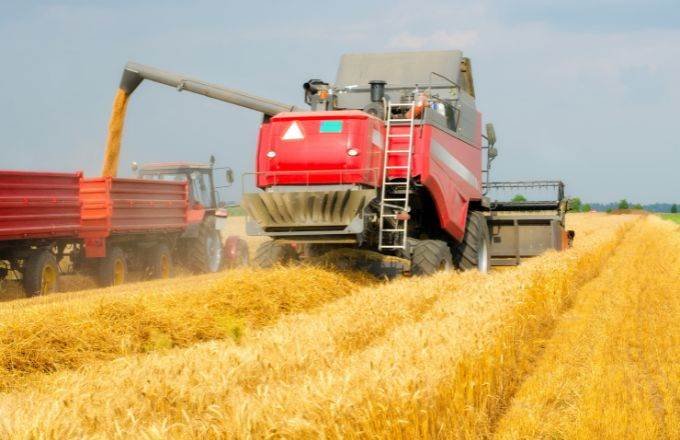
Introduction to Combine Harvesters
“Combine Harvesters”, or “combines”, are big machines that help farmers a lot. They do three things at the same time: they pick up crops, separate the food part, and clean it all up. It helps farmers because they don’t need to do each job step by step. The name “combine” tells us it does many jobs together. In the old days, farmers did these jobs using their hands, which took a long time. Now, combined, all these jobs are faster and easier for farmers. It means more time for other things and less hard work in the fields.
Combine Harvesters Working
- Reaping: Combines cut crops using front equipment like headers, determining the height for slicing grain stems.
- Threshing: Crops enter the threshing drum, which separates grain from stalks by beating the cut crop.
- Separating: Grain, chaff, and straw mix passes over sieves with air blasts. Lighter parts are blown out; grain stays.
- Cleaning: Fans remove non-grain elements, ensuring only the purest grain remains inside the combine.
- Collection: Clean grain goes into a tank. When full, it’s moved to trucks or carts for transport.


Uses of Combine Harvesters
- 1 Grain Harvesting: People mainly use combines to harvest grains such as wheat, barley, rye, oats, corn, and soybeans.
- Seed Crops: They can be adapted for crops like sunflower seeds and certain types of beans.
- Specialized Attachments: With the right attachments, combines can also be used to harvest other crops like rice and some vegetables.
- Data Collection: Modern combines often have integrated technologies to assess crop yields, moisture levels, and other field data, assisting farmers in decision-making.
Advantages of Combine Harvesters
- Efficiency: Combines drastically reduce the time and labor needed to harvest crops, allowing farmers to harvest larger areas in a shorter time.
- Cost-Effective: By consolidating three major operations, farmers can save on labor costs, equipment maintenance, and overall operational costs.
- Reduced Crop Loss: Precision machinery and advanced technologies in modern combines ensure minimal crop wastage during the harvesting process.
- Consistent Quality: Combines provide a more uniform and consistent crop quality as they standardize the harvesting process.
- Integrated Technologies: Many modern combines come equipped with GPS and other technologies, enabling precision agriculture. This allows farmers to optimize their yields, monitor crop health, and improve field management practices.

